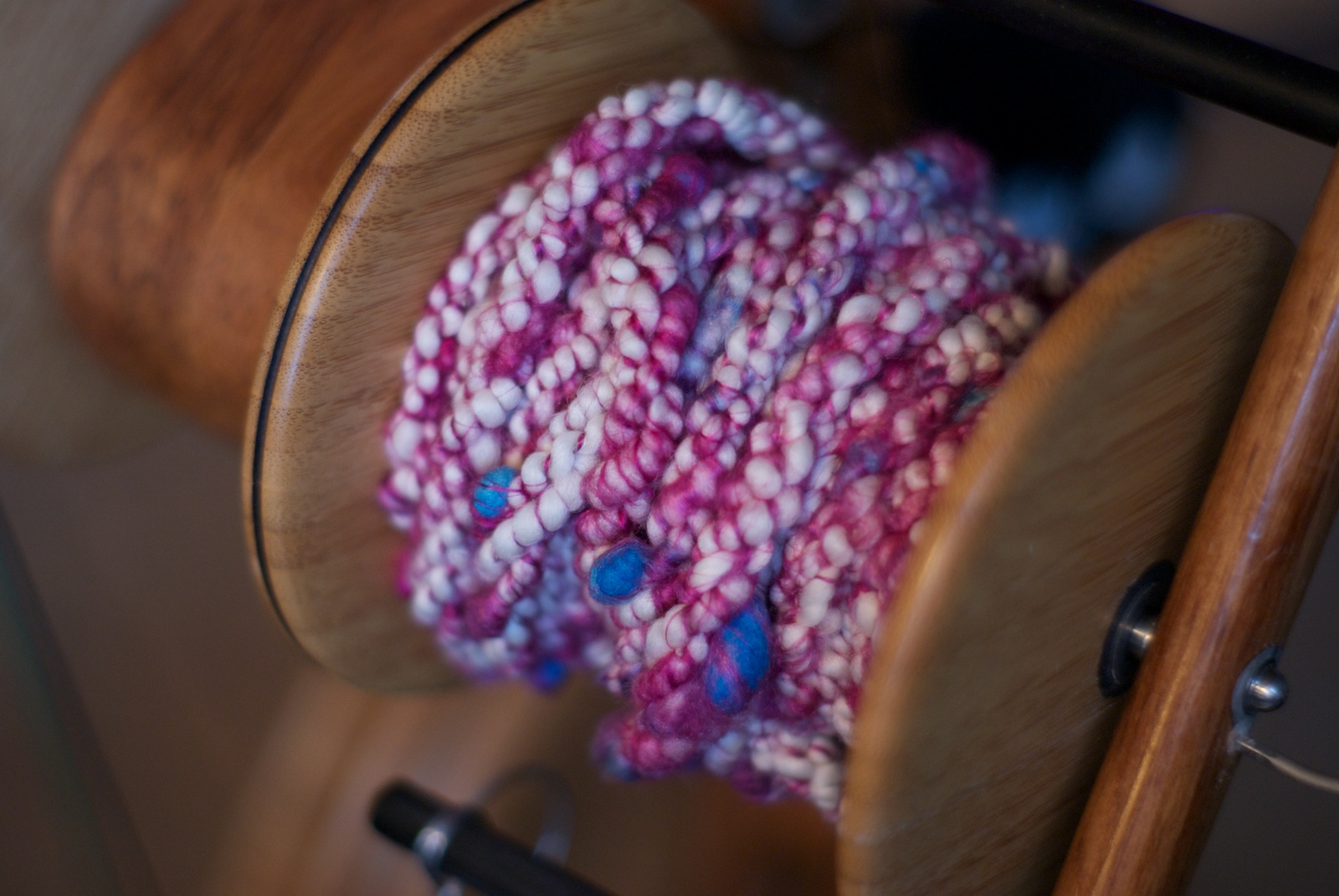 Its my turn to write a blogpost this week (Suzy), and I would like to share something with you about spinning, more specifically about plying. This is actually a document that we created to send out along with our first set of yarn recipe cards, and I think its useful for anyone who wants to ply once, twice, three times, even ten times.. if you want to add texture to your yarns, create unique combinations of colour and form, and play with construction and design, these are the principles that we identified as the most useful to help you achieve your plying goals.
Its my turn to write a blogpost this week (Suzy), and I would like to share something with you about spinning, more specifically about plying. This is actually a document that we created to send out along with our first set of yarn recipe cards, and I think its useful for anyone who wants to ply once, twice, three times, even ten times.. if you want to add texture to your yarns, create unique combinations of colour and form, and play with construction and design, these are the principles that we identified as the most useful to help you achieve your plying goals.
The Principles of Multi-plying
There are just a few things to remember when you are going to use multiple techniques and ply layers in a yarn. What follows is a list of considerations, these are not ‘rules’ because I think experimentation is more important than following prescribed steps, instead, these are simply guidelines to help you achieve a successful yarn, perhaps you can imagine alternative methods or totally new ways to ply, its all good! There is no ‘wrong way’! In the meantime, these are a few things that I think you will find useful when you are planning your yarn.
1. Plan your yarn! When you are multi=plying it is a lot more important to think ahead at the design stage than if you are spinning a more spontaneous creation. To successully multi-ply and construct a complex yarn it really helps to plan ahead, at least enough to know when you need to add extra twist and over-ply or over-spin at each step.
2. Overspinning! This is often harder than it sounds. It is important to overtwist yarns that you know will have twist removed during the next step. This is not so critical when spinning your singles, simply spinning with enough twist as you normally would add for a plied yarn will do. But when you want to ply an already plied yarn, it will only work well if that yarn has extra twist to take out, imagine plying a balanced yarn, it will open out and lose too much twist, it will work if you have maintained enough extra twist in it to allow it to balance on the NEXT ply stage.
I always check this twist regularly as I ply, because we spend so long training ourselves to make a balanced yarn, its easy to slip back into doing that. Stop regularly to pull some yarn back off the bobbin, you should see that plied yarn have enough extra twist to ply back on itself again when you let it loose, then you know you have enough for the next stage.
If you are planning on coiling or Nplying as your final step, you again need to make sure you have enough twist that your yarn doesn’t fall apart when you are partway through coiling or plying. You need more twist to coilspin it than you do to Nply it.
3. Spinning direction. Generally speaking, every time you run your yarn through the wheel, you spin/ply it in the opposite direction than it was last spun or plied. So your normal Z spun yarn is plied S. If you want to then ply that again you ply it in the Z direction, and so on. There are a few types of yarn that do not conform to this process, but for most purposes, this is the only way to eventually achieve a balanced yarn.

Fantásticos consejos!! 🙂
Yay! Thank you for this! I am in the process of spinning up some singles for a multi-plying and was really wondering about the whole direction thing. To be honest my yarns never seem to be balanced anyway (always ping back on themselves once plied), but a starting point is great!